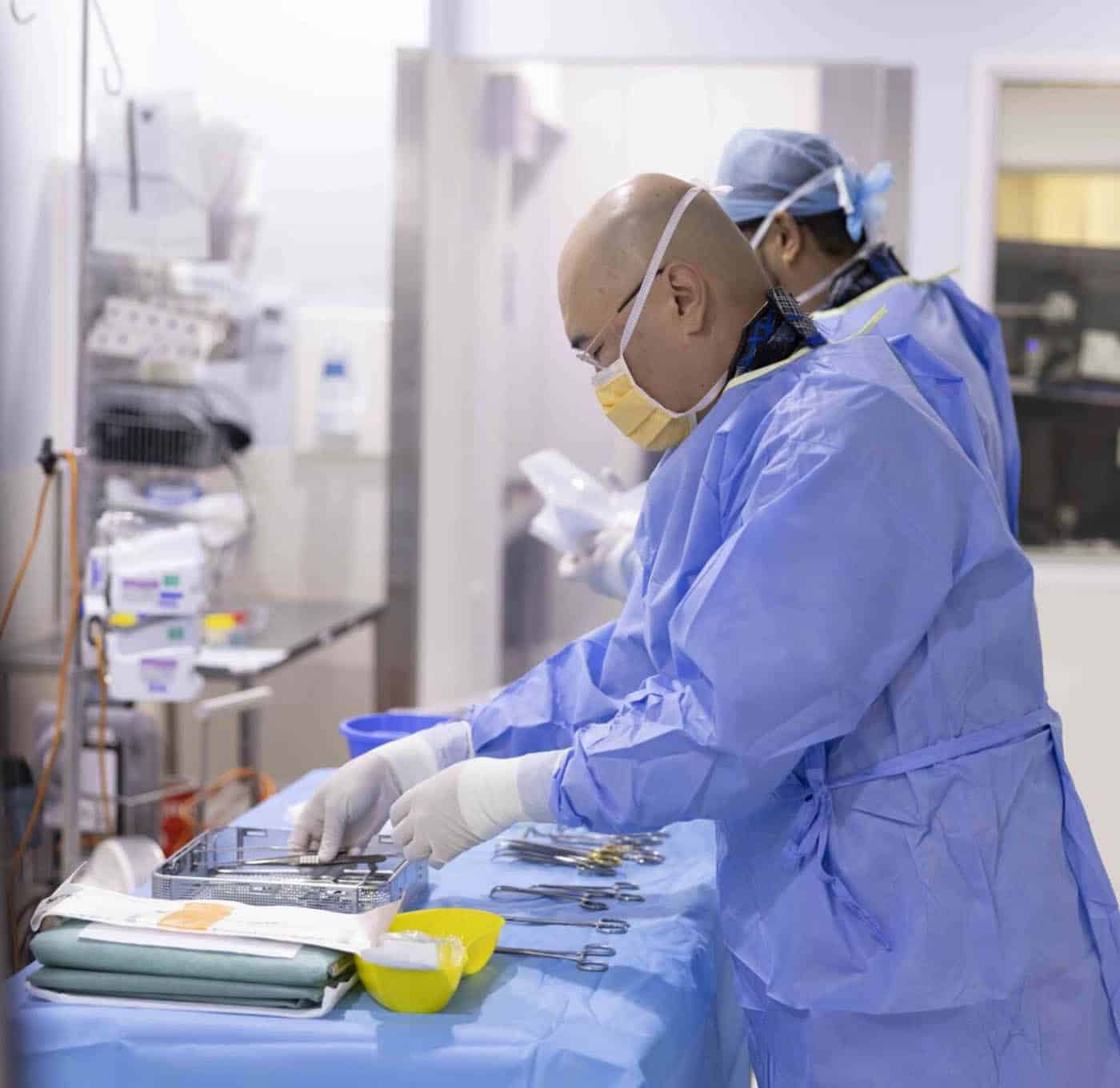Atrial fibrillation ablation
If you suffer from an abnormal heart rhythm, it may be caused by a condition called atrial fibrillation (AF). One method of treatment is a technique called ablation. Ablation delivers electrical energy to the inside of your heart to change abnormal tissues. The heat energy from ablation cuts off the abnormal pathways in the heart to prevent abnormal heart rhythms.

Your doctor has recommended you undergo a procedure called an atrial fibrillation ablation.
You might not have heard of this medical term before now and may be feeling unsure about the nature of the procedure.
This information sheet will outline what the procedure is and what preparations and risks are involved.
After you read this information sheet, you might still have questions. If you do, please contact the team at Heart HQ. We’re here to help.
What’s an atrial fibrillation ablation?
If you suffer from an abnormal heart rhythm, it may be caused by a condition called atrial fibrillation (AF). One method of treatment is a technique called ablation. Ablation delivers electrical energy to the inside of your heart to change abnormal tissues. The heat energy from ablation cuts off the abnormal pathways in the heart to prevent abnormal heart rhythms.
As your doctor will explain to you, this procedure doesn’t guarantee relief from an abnormal heart rhythm. Approximately 50 to 70% of these procedures are successful, while 30 to 50% of patients may need to have the procedure again.
How does it work?
An intravenous line (IV) will be placed into a vein in your arm. This is for the medical team to administer medication throughout your procedure. You will receive an injection of local anaesthetic before catheters (very fine tubes) will be put into the vein in your groin. A sedative will also be given.
Your doctor will carefully pass the catheters through the vein up into your heart. Your doctor can see the catheters by using x-rays.
Your doctor will locate your abnormal heartbeat in a particular area of the heart. The ablation catheters can ‘burn’ that part of the heart muscle and cause a scar to this area of the heart. It may take several attempts to scar the area. When the scar forms, this will cut off the abnormal pathway and prevent further irregular heartbeats.
The ablation described above will then take place. While this happens, you may feel a mild burning sensation in your chest while the abnormal pathway is being cut off. This burning feeling will go away when the ablation stops.
What kind of risks are associated with this procedure?
Any kind of procedure carries some element of risk, often very small and rare.
In recommending this procedure, your doctor has balanced the benefits and risks of carrying out the test against the benefits and risks of not proceeding. If you’ve been recommended to undertake this procedure, then your doctor believes there is benefit to you going ahead.
It’s important you understand the risks involved so you can make an informed decision.
Here are the most commonly reported risks and complications associated with an atrial fibrillation ablation.
Common risks and complications (more than 5% of cases)
- Minor bruising at the puncture site
Uncommon risks and complications (1–5% of cases)
- Other arrhythmia developed
- A hole accidentally punctured in the heart or heart valve—this may require drainage or surgery to repair
- Chest pain
- Major bruising or swelling at the puncture site—in rare cases this may require surgery
- A stroke–this may cause long term disability
- Blood clot in the leg (DVT) causing pain and swelling—in rare cases the clot may break off and go to the lungs
- Skin injury from radiation—this may cause reddening
- A higher lifetime risk from exposure to radiation
- Pericarditis—inflammation of the heart sack which can cause chest pain for some weeks after the procedure
Rare risks and complications (less than 1% of cases)
- Narrowing of the veins from the lungs to the heart—this is serious and may require further procedures
- Heart attack
- Damage to the phenic nerve that controls the diaphragm (breathing muscle)
- Atrial oesophageal fistula—a hole forms between the gullet and heart. This can cause vomiting of blood and a stroke. This can be life threatening.
- Death as a result of this procedure is rare
Atrial fibrillation ablation info sheet